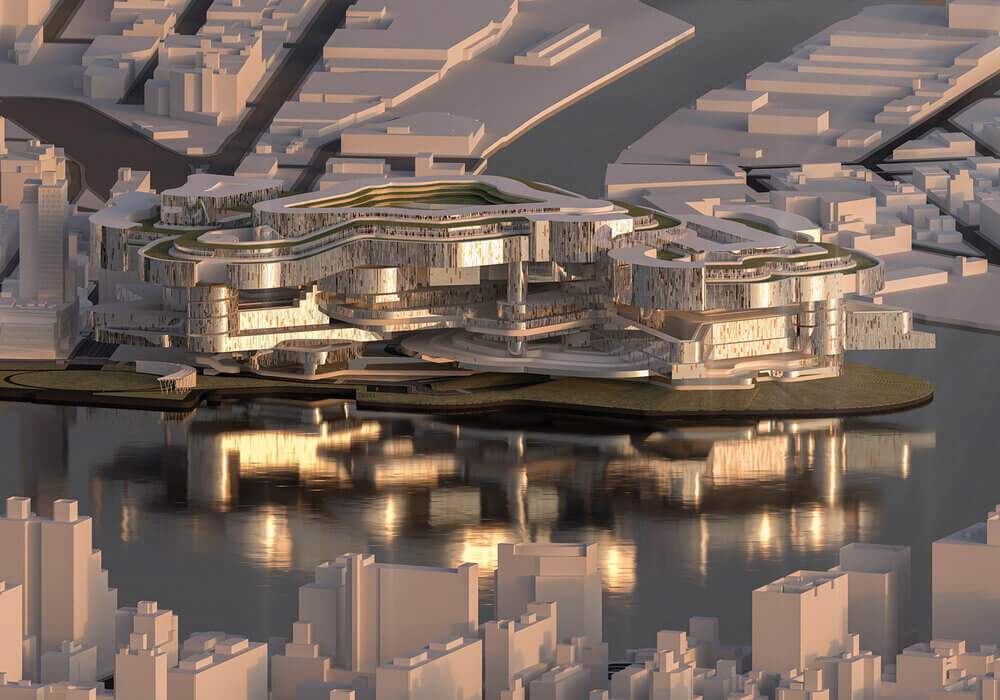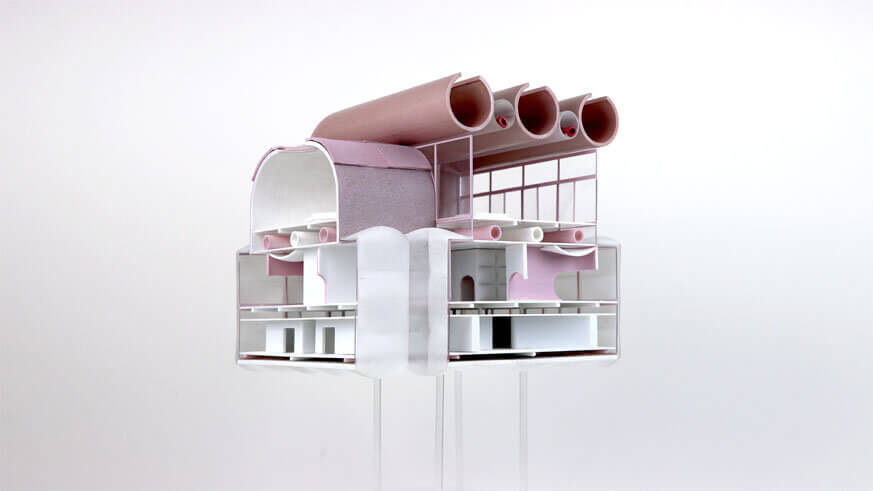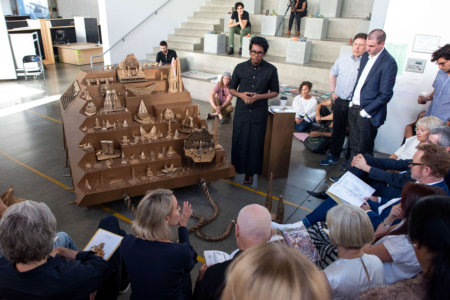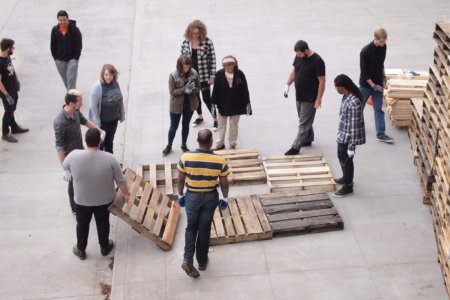The best artists are inherently resilient. Nothing but adaptable, everything but easily crushed. No year proved this adage truer than 2020.
When the lectures, exhibitions, and openings largely stopped, they found alternatives. With context, place, people—the usual elements that guide designers, architects, painters, performers, and more—limited, they reassessed. In the end, they returned to the basics. All they needed: imagination and Wifi.
At SCI-Arc, great architecture emerged. The 2021 Undergraduate Thesis Weekend that took place in April showed the renaissance of a zeal—a distinctive kind of vivacity that can only be borne out of extraordinary times—to shape a better future.
“In times of crisis, we demand and hope that architecture helps us cling to the possibility of a better future,” comments SCI-Arc Director Hernán Díaz Alonso. “Our 2021 Undergraduate Thesis students, with the support of our incredible faculty, have renewed this energy for us over the past year. The work they’ve produced in the face of uncommon challenges continues the imagination, obligation, and commitment of architecture as a cultural production to improve us as a species. These are times of transformation and renewal for our society, facilitated forward by the creativity of our students. They are a vehicle for the changes we want and need.”
Since its founding in 1972, it has been in SCI-Arc’s DNA to educate architects who will imagine and shape the future. Located in downtown Los Angeles, in a quarter-mile-long former freight depot in the Arts District of Los Angeles, it is one of the nation’s few independent architecture schools, offering undergraduate, graduate, and postgraduate programmes.
Each year, Undergraduate Thesis at SCI-Arc prepares fifth-year B.Arch students to articulate, propose, and defend their ideas and positions on architecture as well as engage with professionals as peers and colleagues. In their final semester of design studio, students in SCI-Arc’s Undergraduate Thesis class complete the production of a year-long thesis project, which addresses a position in relation to contemporary architectural discourse and presents a highly developed building design project.
Aditya Jagdale, inspired by the Medusa heads in the Basilica Cisterns underneath Hagia Sophia, took on the rising political discomfort at the European Parliament. He envisioned its plenary hall as an ornamental canopy at the entrance of the new building. By deliberately misusing the existing parliament building, the project calls for and expresses the exigency for a different and more equitable future.
Santiago Alvarez and Malvin Bunata Wibowo used a queer tactic to distort and reinterpret concepts relating to care in architecture. They transformed elements that typically provide comfort—such as plushies, stitches, and blankets—in unfamiliar ways, resulting in different approaches to question conventional notions of caretaking. The goal was to address some of the infrastructure challenges relating to queer care in the region.
Victoria Carvajal and Corina Dow focused on the representation of conservation in architecture. “Our thesis proposes a new architectural approach to the conservation of (in this specific case) the American Landscape,” they share. Through chthonic—what is in or under the ground—means, they are able to repurpose whatever is extracted from the ground into the design of their project.
Their work is a reflection of SCI-Arc student resilience in the face of one of the most virulent threats to humanity in recent decades. The above represent a sampling of the boundary-pushing work presented at this year’s Undergraduate Thesis Weekend, which was held remotely and in real-time, so friends and family from all over the world could tune in. Over 70 jurors, critics, and architecture professionals from around the globe converge to discuss, debate, and dispute emerging questions in architecture.

Jessie Leo Toni. Source: Southern California Institute of Architecture – Sci Arc
“Since our move to remote teaching a year ago,” shares Undergraduate Thesis Coordinator Jenny Wu, “our students have used this opportunity to be inventive about how they work on their thesis, by transforming their digital work into compelling narratives and turning their own living spaces into creative laboratories for unconventional model building.”
Campus may be closed, but the distinctive SCI-Arc spirit of collaboration remained. Students and faculty members continued to work together in a fluid, nonhierarchical manner to rethink assumptions, create, explore, and test the limits of architecture.
“I’m super impressed that our undergraduates have been able to create high-level discourse about the architectural issues of today, all while being physically separated from one another,” relates Tom Wiscombe, SCI-Arc Undergraduate Programme Chair. “It sounds impossible, but they and their faculty have been crafty, relentless, and focused on establishing and maintaining a strong community throughout.”













